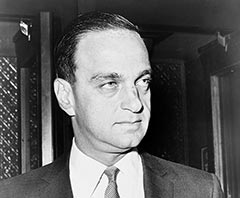


The jump in enforcement actions during the 1960s raised basic questions about what the SEC could do to violators of the securities laws. Criminal violations could of course be referred to Federal prosecutors, but apart from that the staff’s ability to rectify wrongdoing was thin. Until the 1980s, the securities acts chiefly gave the Commission the power to seek injunctions against future bad conduct, in the process publicizing bad behavior, but it lacked statutory authority to impose monetary penalties for violations of the securities laws.(1) As one former Director of Enforcement summed it up, “for most of the life of the SEC, the basic remedy . . . that formed the core of the entire enforcement program was an ‘obey the law’ injunction,”(2) a remedy that another veteran staffer found “of limited value in that they were usually restricted to an individual’s conduct or trading with respect to a particular stock.”(3) On occasions the staff was able to persuade a court to order a receiver for egregious actions by a broker-dealer, issuer, or investment company, but such a drastic remedy was rare.(4)
Yet the limits on enforcement attorneys’ explicit powers had an unexpected benefit, as it pushed them to develop a creative approach to legal theories and remedies that would become a hallmark of SEC enforcement. Relying on courts’ equitable powers, SEC attorneys began including sweeping remedies in the consent decrees that typically concluded their investigations. Perhaps the first instance of this was in SEC v VTR, a 1966 case where a consent decree was reached after accusations that insiders had looted their firm.(5) In an early foray into corporate governance, the decree required not only restitution but the election of four independent directors “designated by the court to supervise the filing of proper annual reports and proxy statements . . . and to supervise a determination of the exact amount misappropriated.”(6) In Texas Gulf Sulphur, SEC attorneys persuaded a court to order defendants to disgorge the gains they made from insider trading, making it the “first case in which the Commission successfully obtained equitable relief in the form of monetary damages.”(7)

While enforcement in the 1960s did not attract the public attention it would earn in later decades, the SEC did have a few high-profile enforcement matters during the 1960s, notably Fifth Avenue Coach Lines, a case spearheaded not by the Division of Trading and Markets but by Corporate Regulation (now Investment Management).(8) Fifth Avenue Coach Lines’ main asset had been the bus lines running down New York’s Fifth Avenue, lines which the city took by eminent domain in 1961. The company was left with little business but a gigantic payment from the city. The SEC alleged that a management cabal led by McCarthy-era attorney Roy Cohn planned to loot the firm. In a novel argument the SEC contended that the company, shorn of its bus routes, had become an unregistered investment company, and its managers’ malfeasance was thus a violation of the Investment Company Act.(9) After a contentious 1968 trial the SEC won its case and a receiver was appointed for the company, though Cohn avoided a criminal conviction in a related case a year later.(10)
(1) Theodore A. Levine & Edward D. Herlihy, The Father of Enforcement, 43 Sec. Reg. L. J. 7, n17 (2015).
(2) Enforcement Remedies roundtable 2005: 3 (Bill McLucas comment).
(3) Hawke: 5.
(4) Comment, Equitable Remedies in SEC Enforcement Actions, 123 U. Pa. L. Rev. 1188.
(5) Arthur Mathews, Recent Trends in SEC Requested Ancillary Relief in SEC Level Injunctive Actions, 31 Bus. Law. 1323, 1326.
(6) Hawke: 21 (quoting SEC Annual Report 1966: 116-17).
(7) Hawke: 21 (citing SEC v Texas Gulf Sulphur, 446 F.2d 1301 (2d Cir. 1971)).
(8) Terry Robards, SEC Cites Cohn in Bus Line Case, N.Y.Times Feb. 10, 1968: 45.
(9) SEC v Fifth Ave. Coach Lines Inc., 289 F.Supp. 3 (SDNY 1968).
(10) Nicholas von Hoffman, Citizen Cohn: 347-50 (1988).
Bill McLucas served at the SEC for 21 years, the last 9 as director of the Division of Enforcement. He started as a staff attorney in 1977 and became branch chief under Stanley Sporkin. He then rose through the ranks in the Enforcement Division as assistant director, associate director, and became director of the Division in 1989. In his oral history interview, he discusses what it was like to serve under directors Sporkin and Fedders, and for five SEC Chairmen as division director, and how the SEC’s enforcement program evolved over his time at the SEC, and since his departure from the agency in 1998. Mr. McLucas was a founding trustee of the SEC Historical Society.